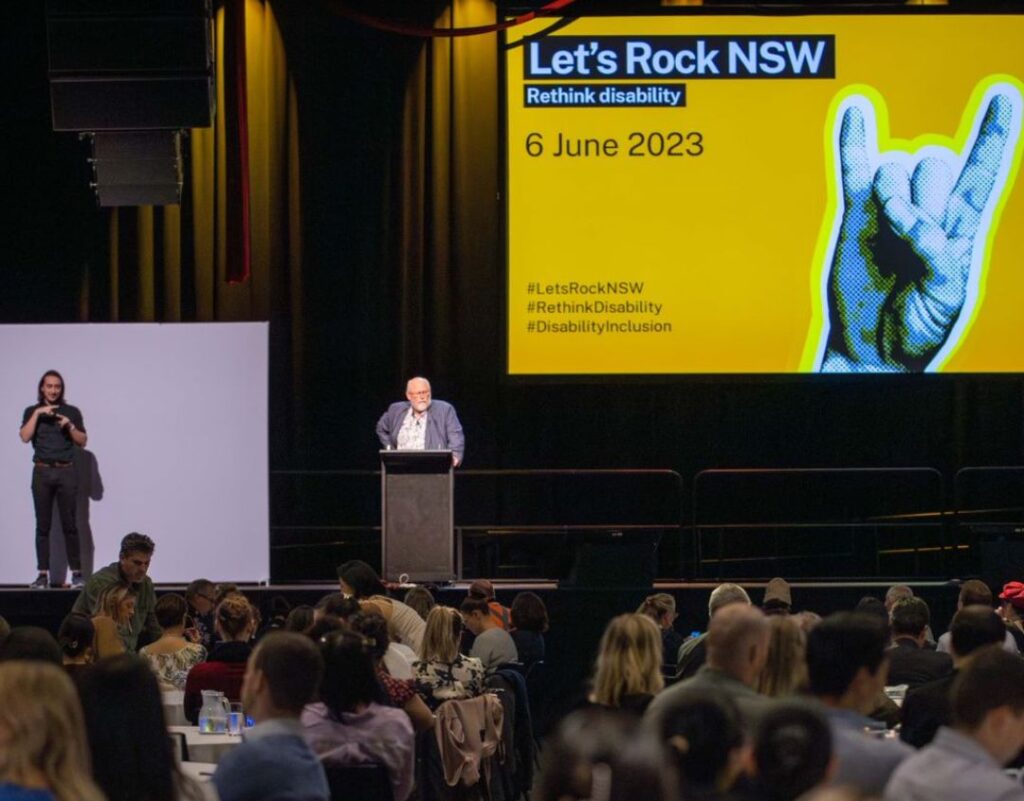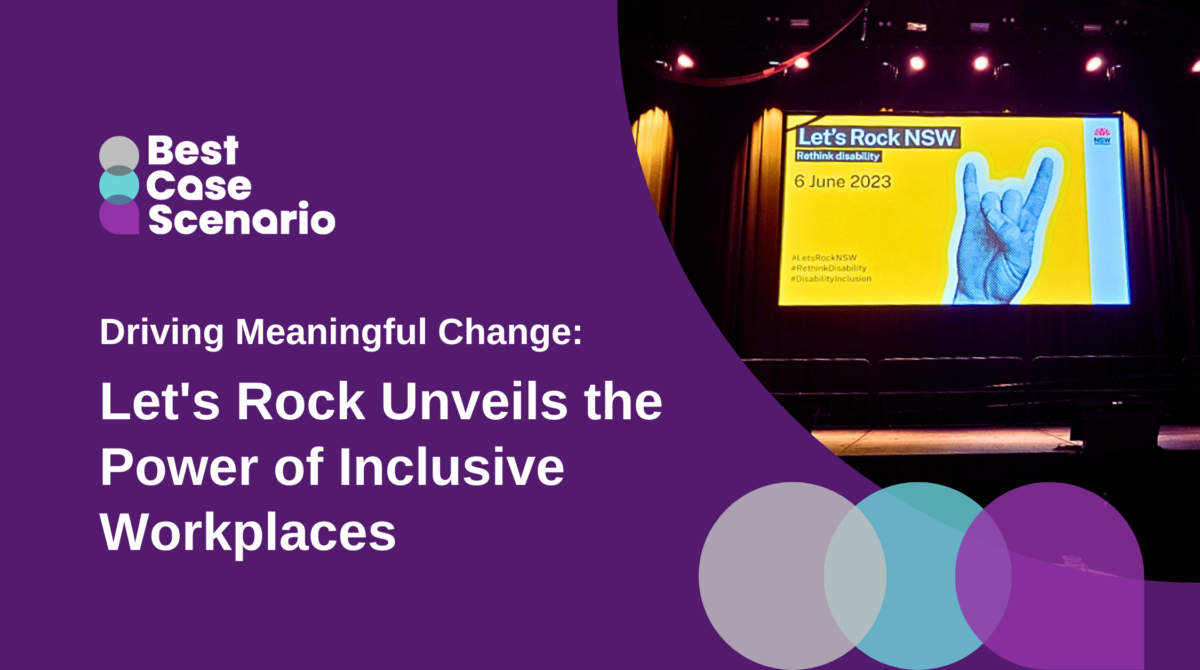As the partnership unfolded, our shared vision became more apparent, —to celebrate diversity and champion inclusive workplaces. Our values aligned perfectly, fuelling our passion to support their ground-breaking initiative, Let’s Rock NSW, which was a transformative event that asked attendees to ‘Rethink Disability’ by challenging perceptions, sparking conversations, and activating lasting change.
This gathering brought together an extraordinary ensemble—NSW public sector employees, people with disability working in the public sector, esteemed senior executives, and passionate representatives from the disability sector. It was a harmonious tapestry of collaboration and inclusivity.

Image: NSW Government’s first statewide hybrid disability inclusion event Let’s Rock NSW (source: LinkedIn post of NSW Department of Customer Service)
BCS’s involvement in Let’s Rock NSW was more than just to support their event operations; it was an unwavering commitment to how we too needed to redefine disability as we knew it. We both understood that diversity and inclusion were not just abstract concepts but vital pillars for innovation and success. This event became the perfect platform to showcase the positive impact of inclusive practices and shatter preconceived notions about disability.
Within the Let’s Rock event, a beacon of change/action emerged—the captivating keynote speaker, Dylan Alcott AO. As a world-renowned wheelchair tennis player, Paralympic gold medalist, and relentless disability advocate, Dylan shared his remarkable journey and accomplishments. His presence illuminated the room, igniting a collective realisation that assumptions should not be made about people with disability and that they quite often possess immeasurable talent that as an employer, you could be missing out on. Through his story, attendees were compelled to create inclusive environments where everyone’s unique abilities were celebrated.
The event unfolded with a riveting panel discussion, where experts delved into the barriers encountered when striving for diverse workplaces. Their insights and lived experiences sparked a fire within attendees, challenging them to question traditional norms and embrace fresh perspectives.
Let’s Rock NSW shattered the glass ceiling of conventional thinking surrounding disability and inclusion. It showcased success stories and emphasised the immeasurable value of diverse perspectives. It became an embodiment of the contributions people with disability make in the NSW public sector. BCS felt an immense pride in being part of an initiative that invited attendees to revolutionise their mindset and strive for transformative change.
The impact of Let’s Rock NSW was profound and enduring. Participants departed with a renewed commitment to foster inclusive workplaces and become agents of change. They experienced a paradigm shift—a revelation that diversity and inclusion were not just buzzwords but catalysts for innovation, growth, and societal progress.
BCS want to share this remarkable collaboration and the tale of Let’s Rock NSW, with their own clients, illustrating NSW Government’s unwavering journey towards creating a truly diverse workforce.
Being part of this event is an affirmation that when organisations embrace diversity, equity, and inclusion, they set the stage for true greatness. And with each collaboration, BCS sought to propel this revelation forward, illuminating the path towards a brighter, more inclusive future.




